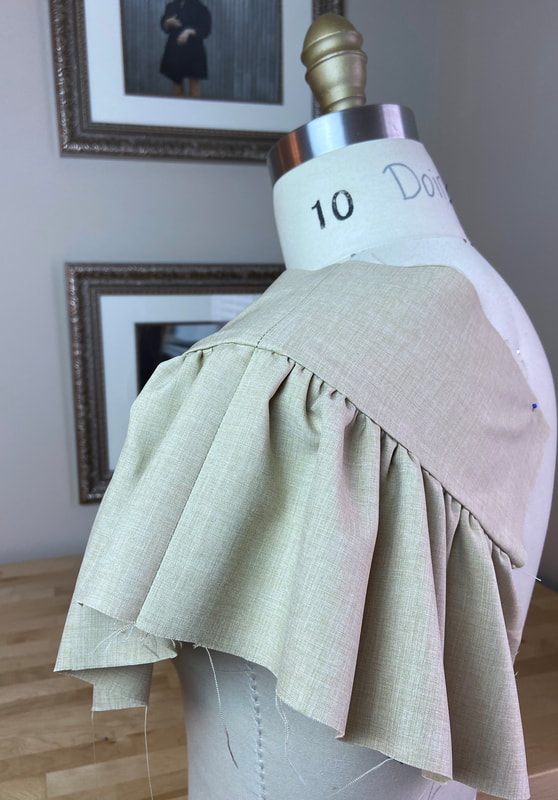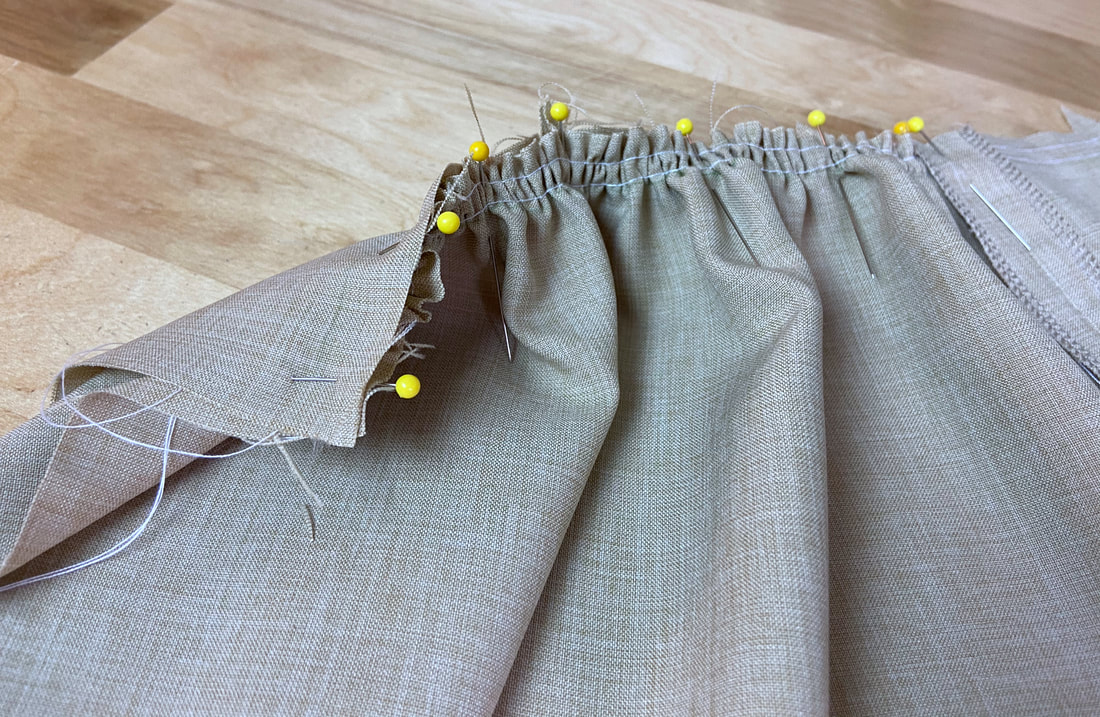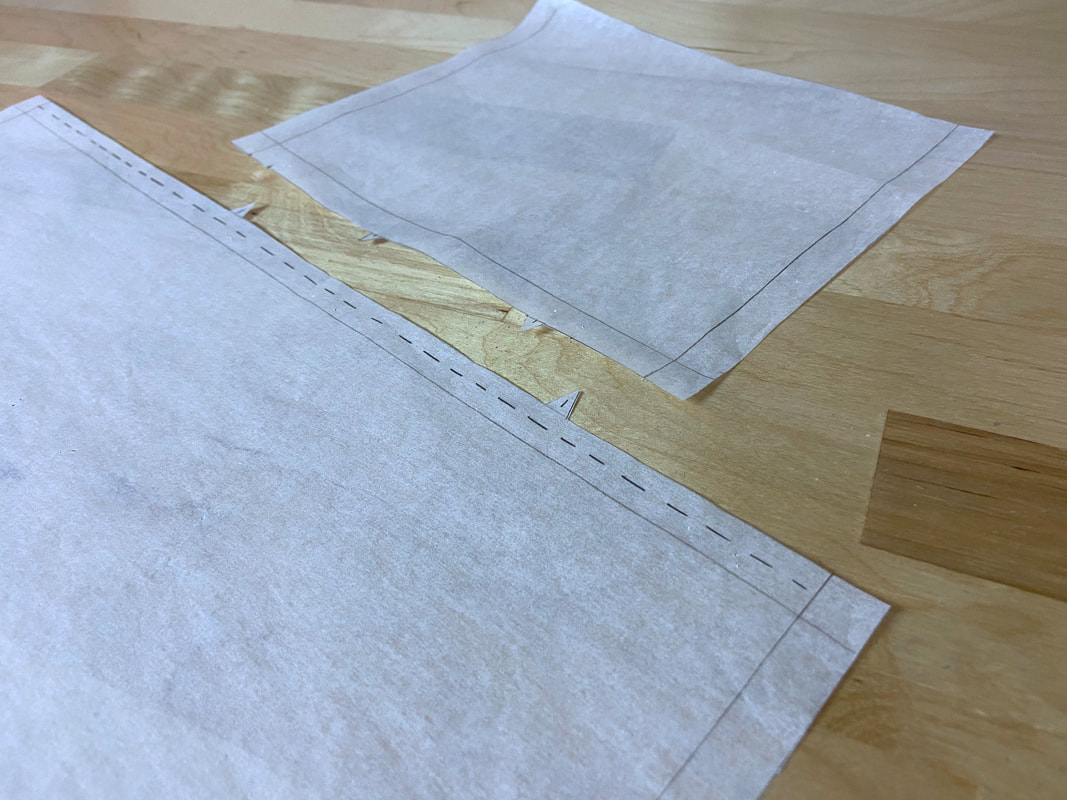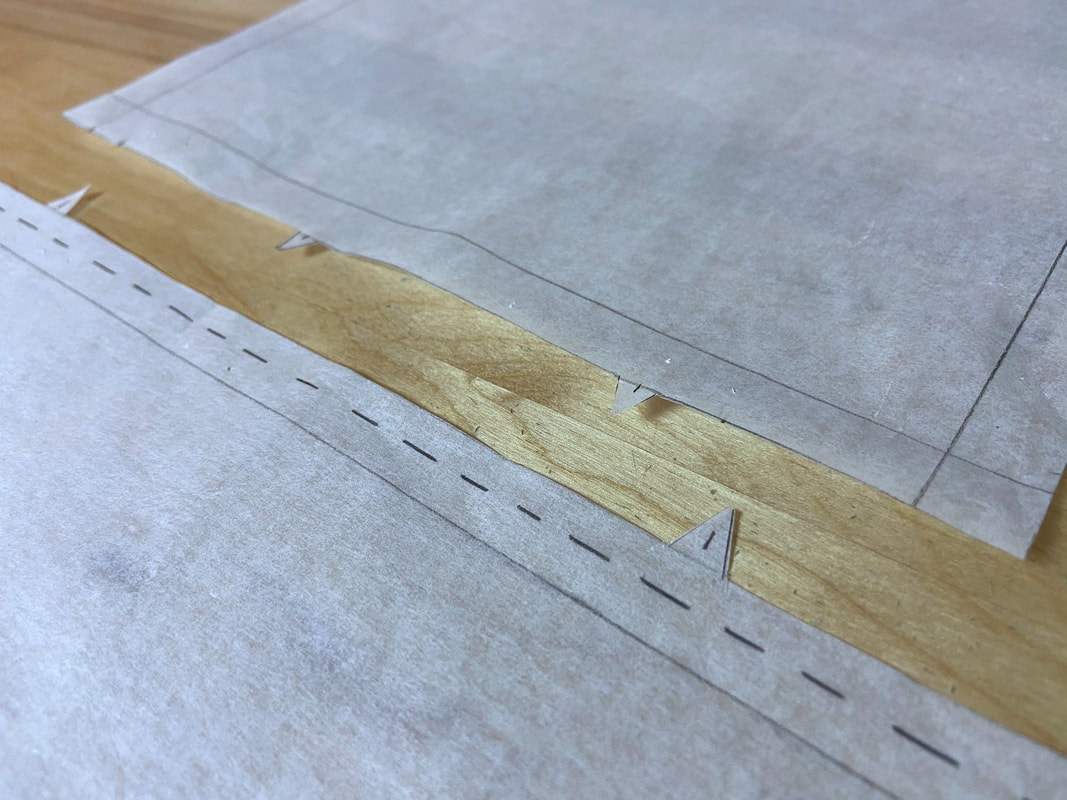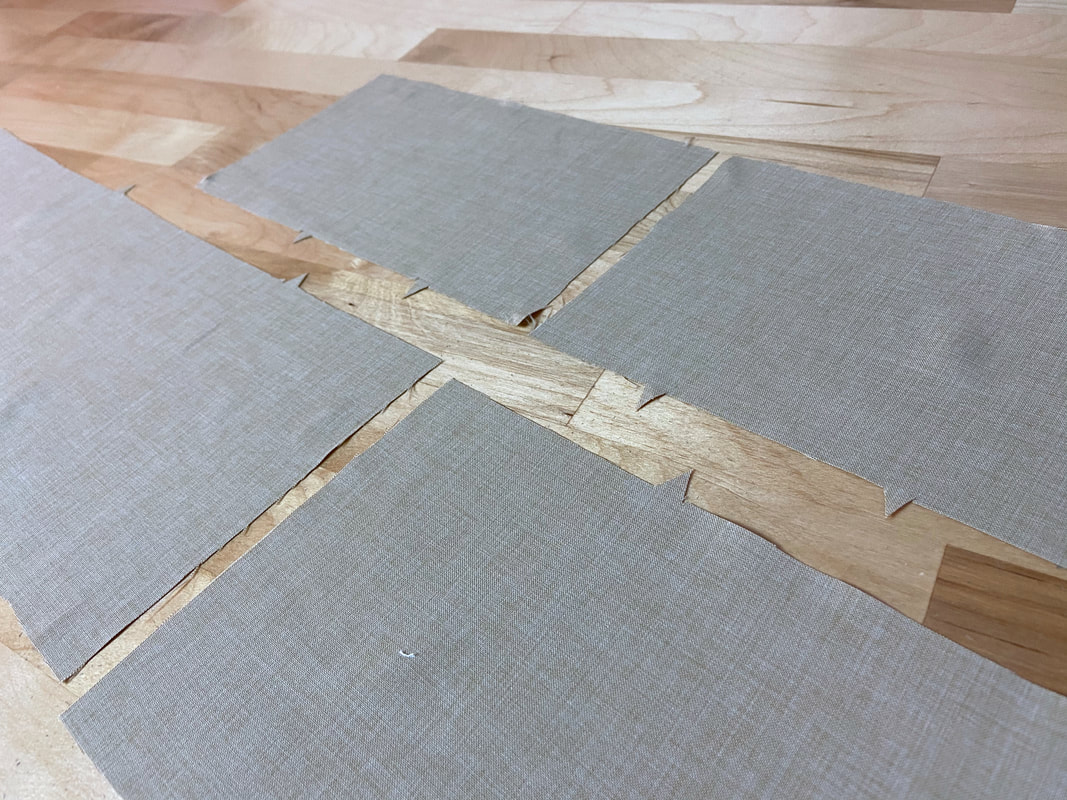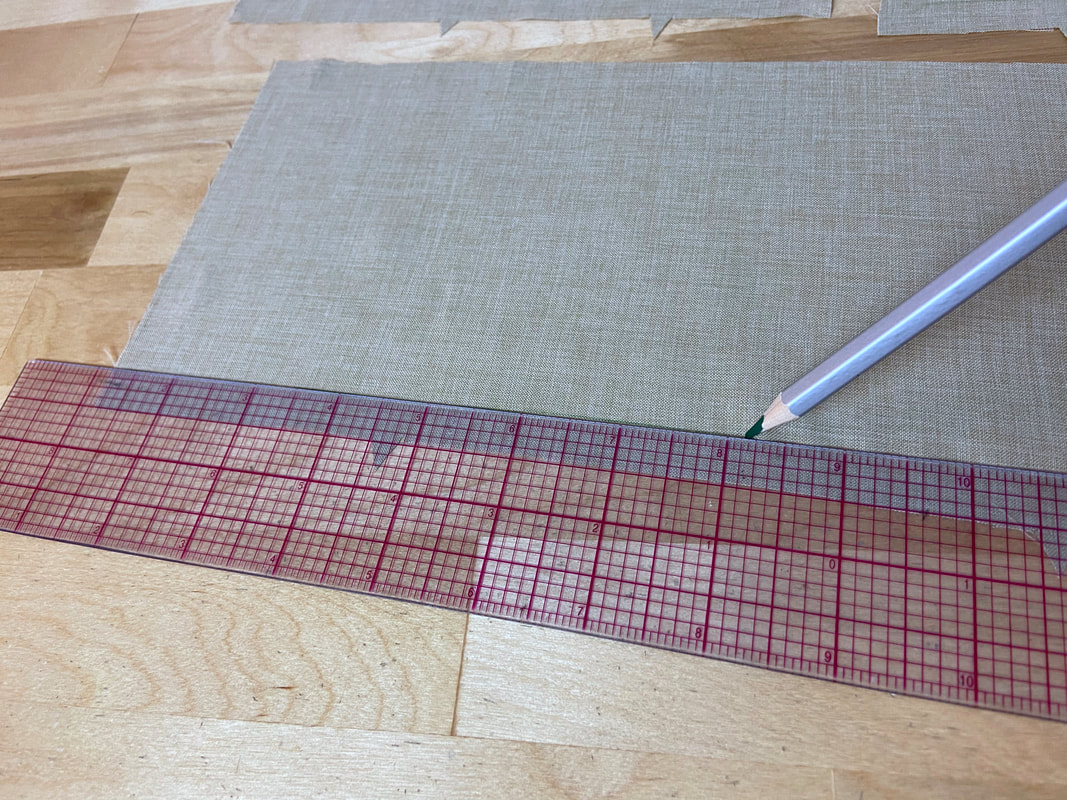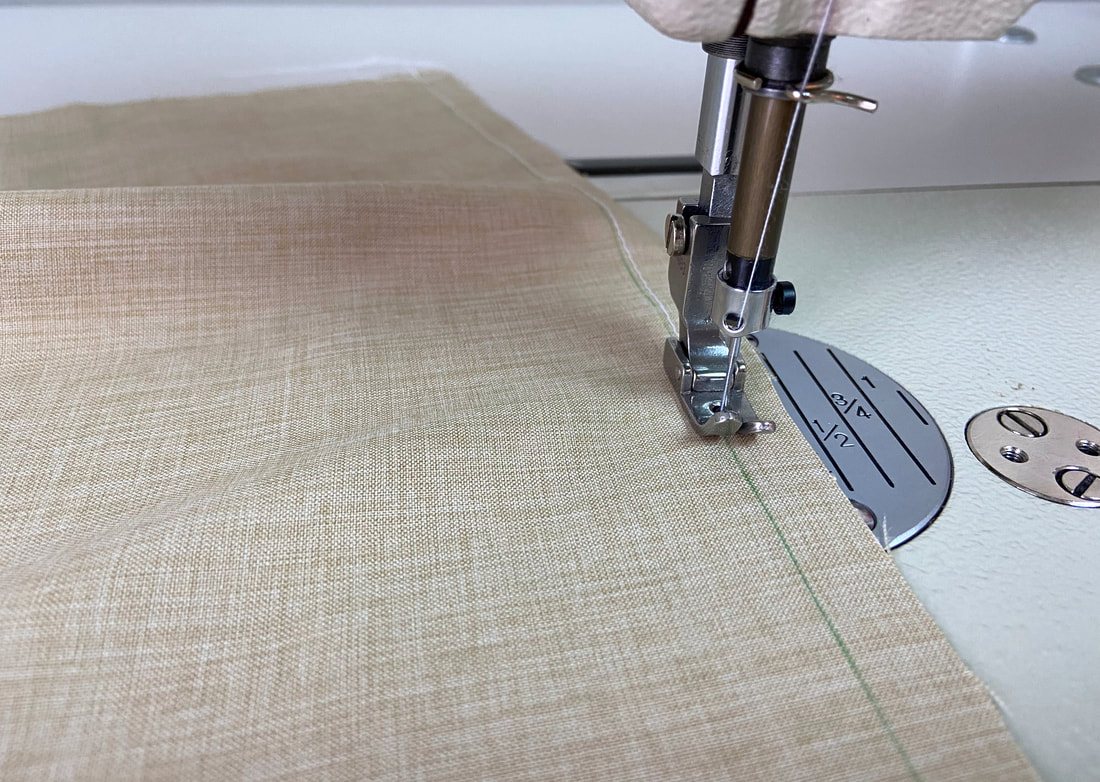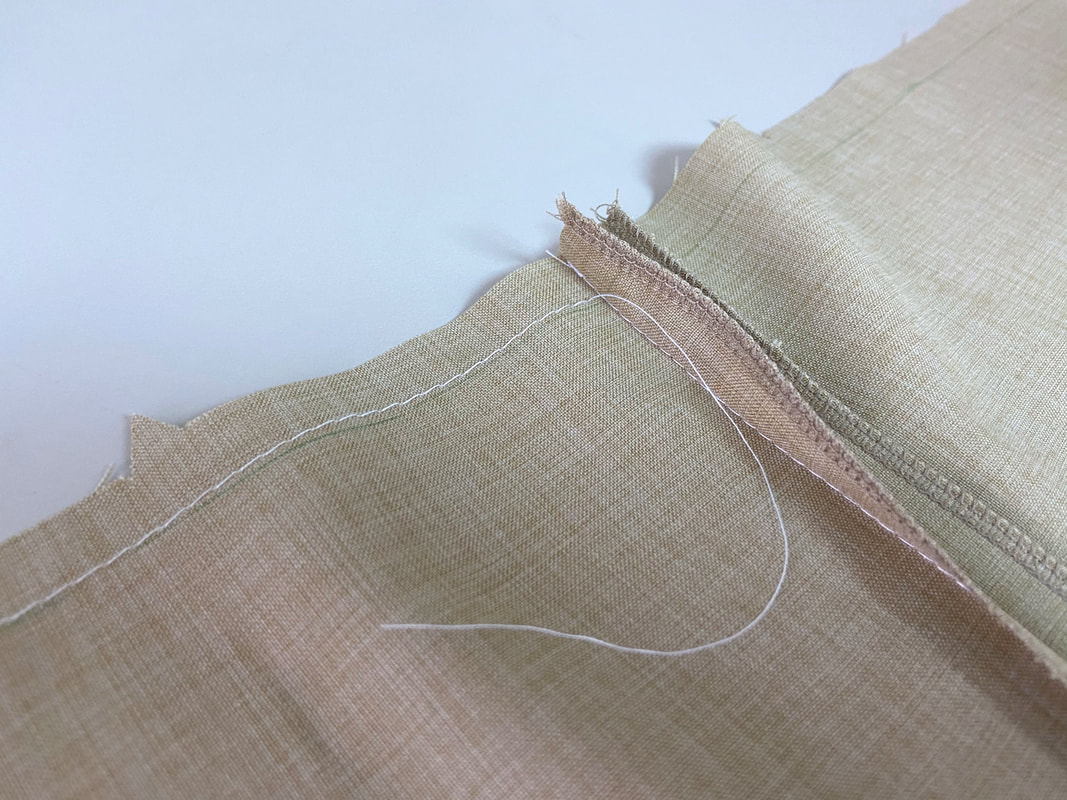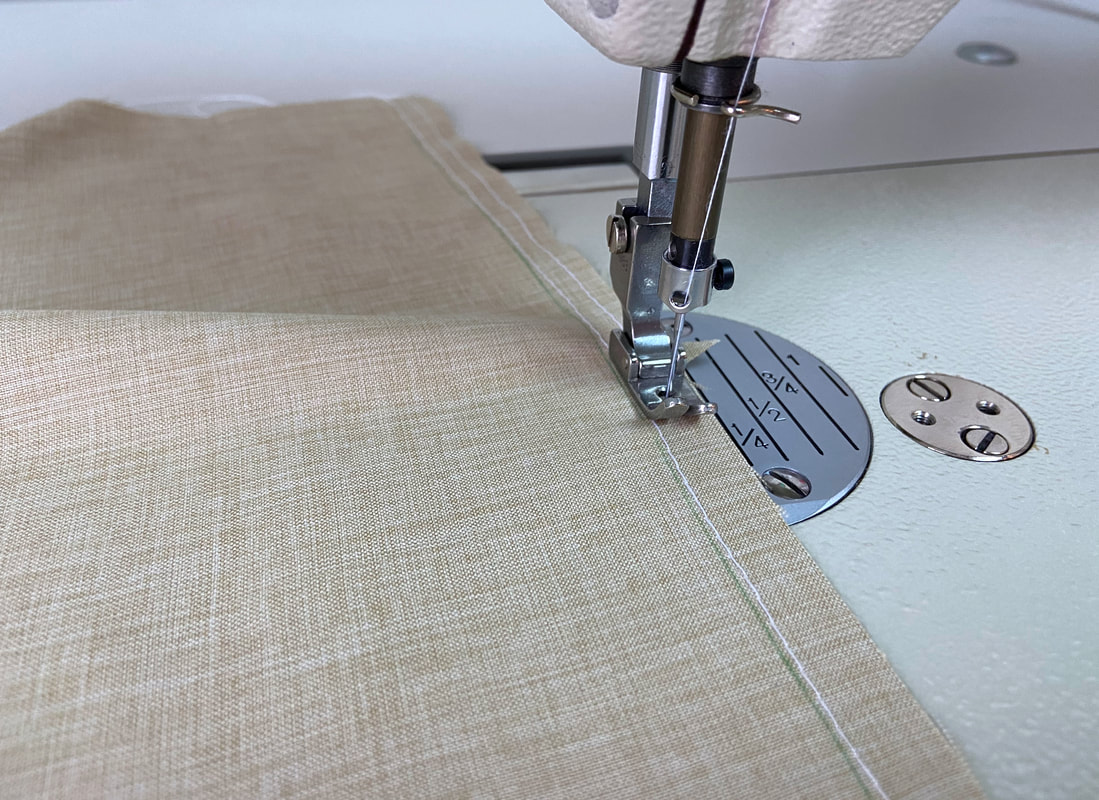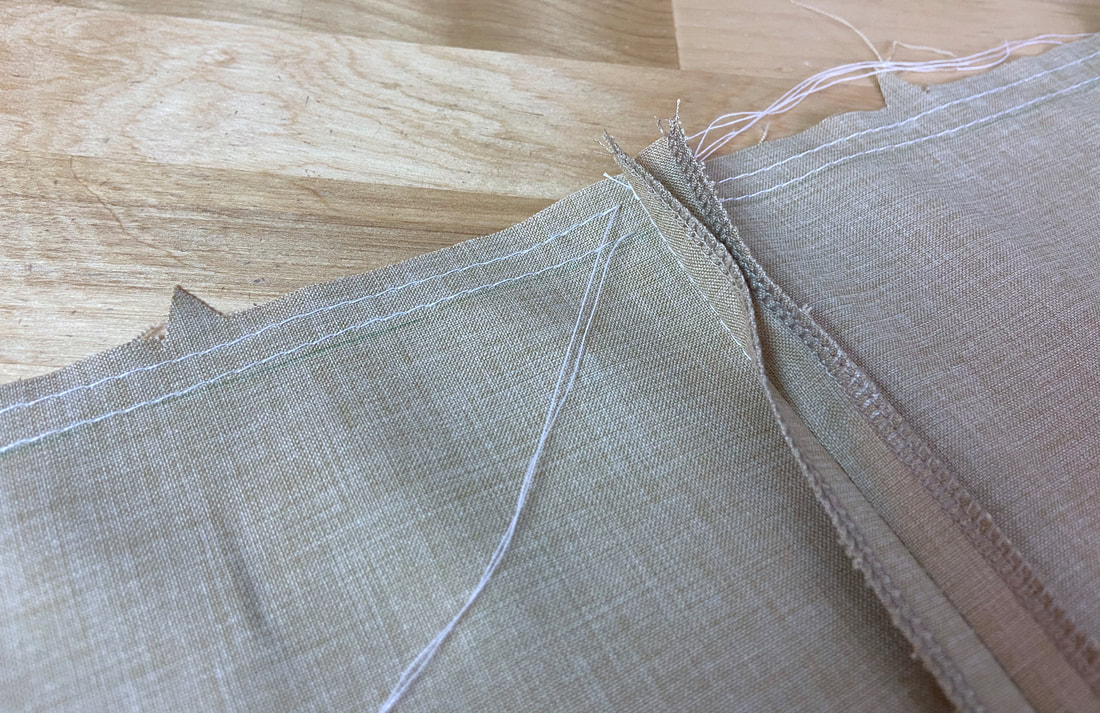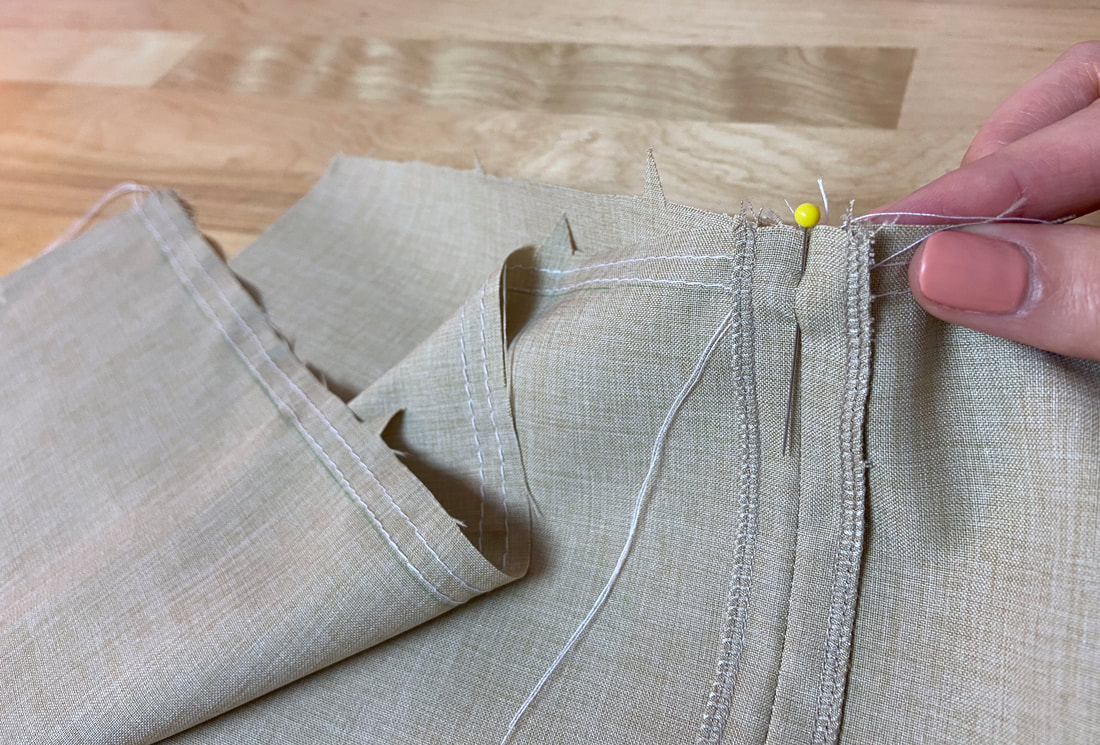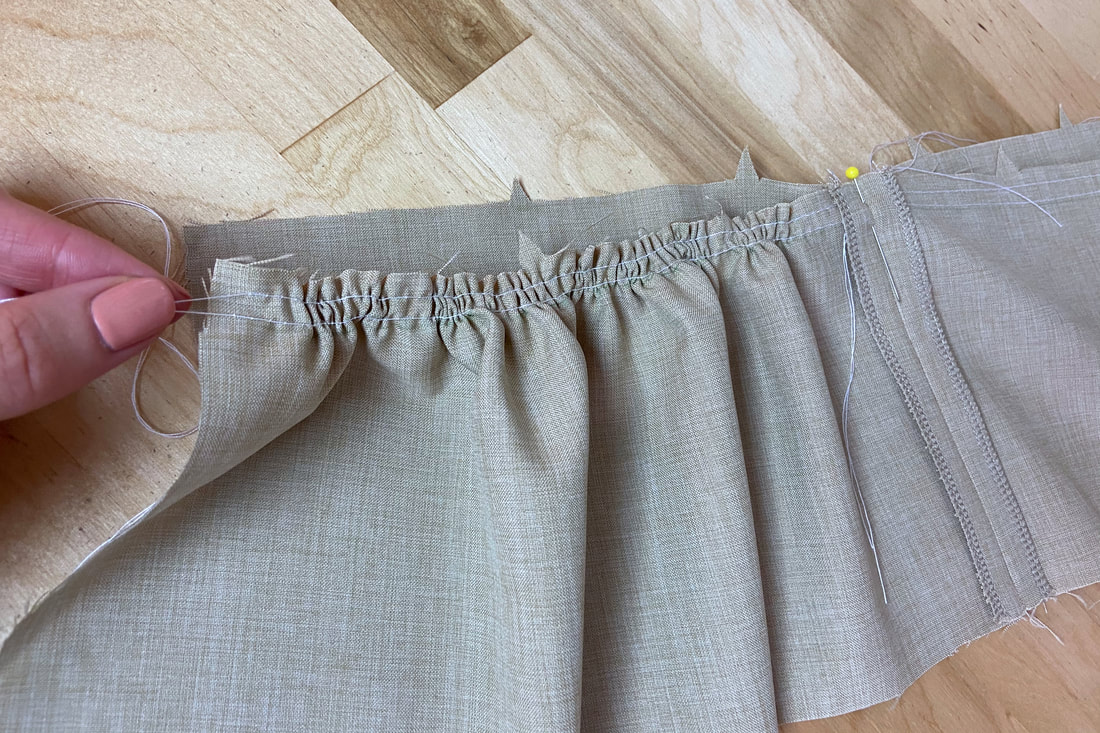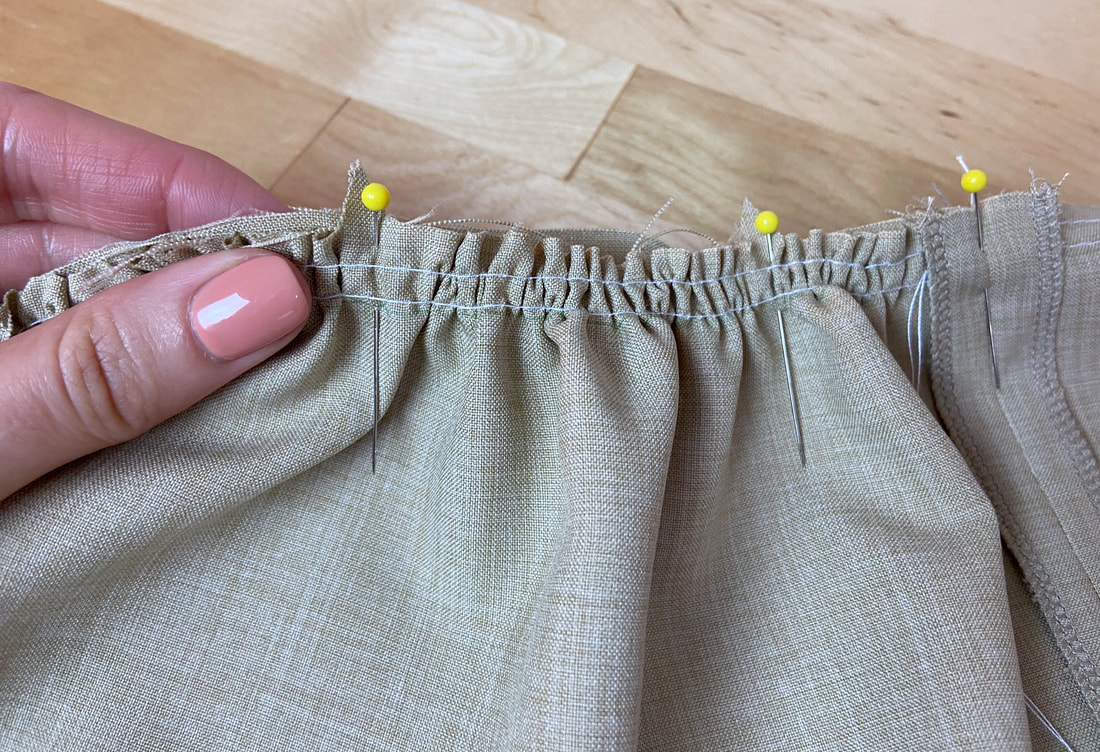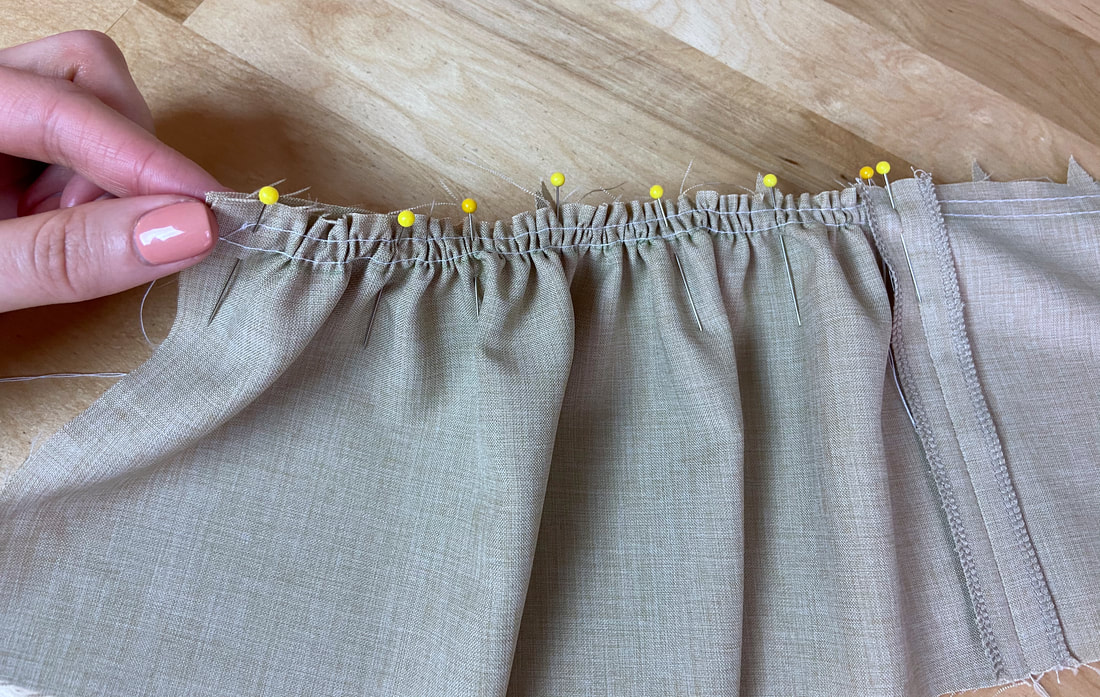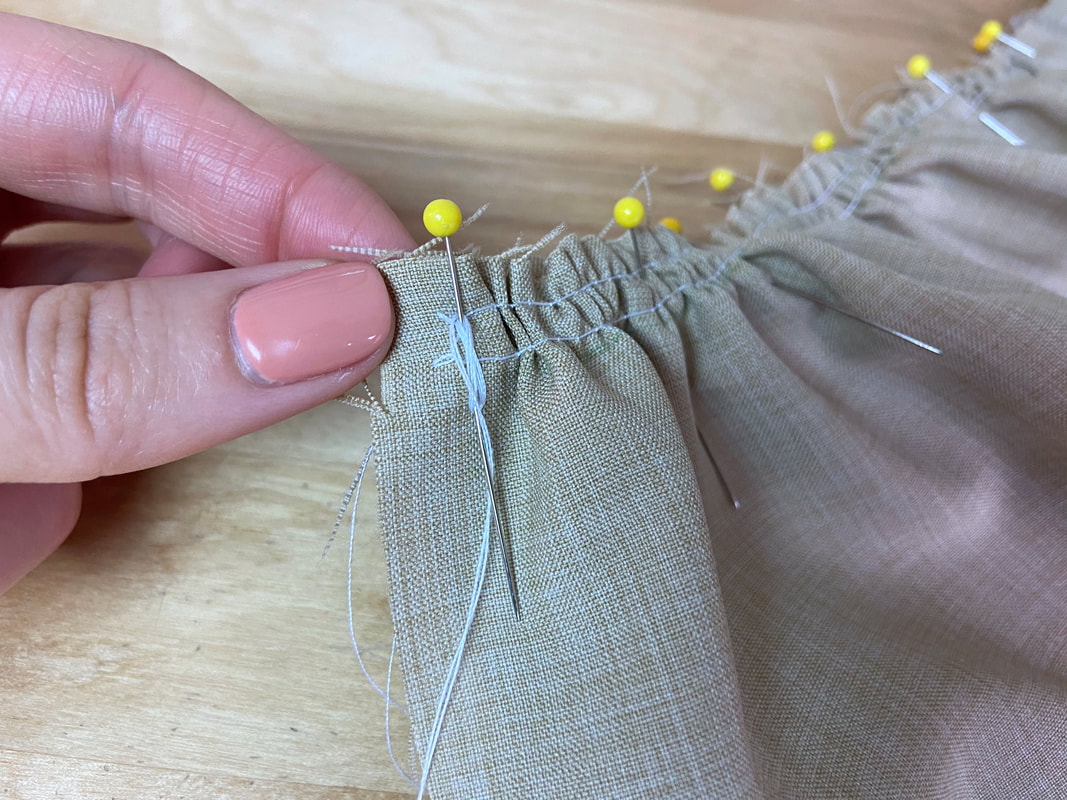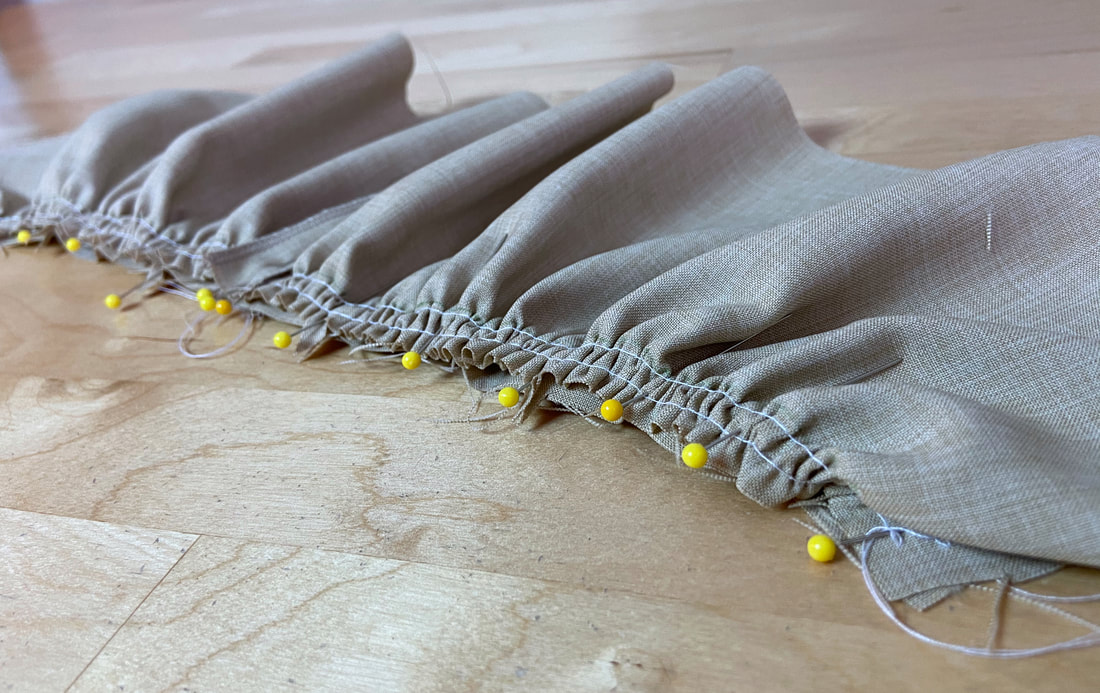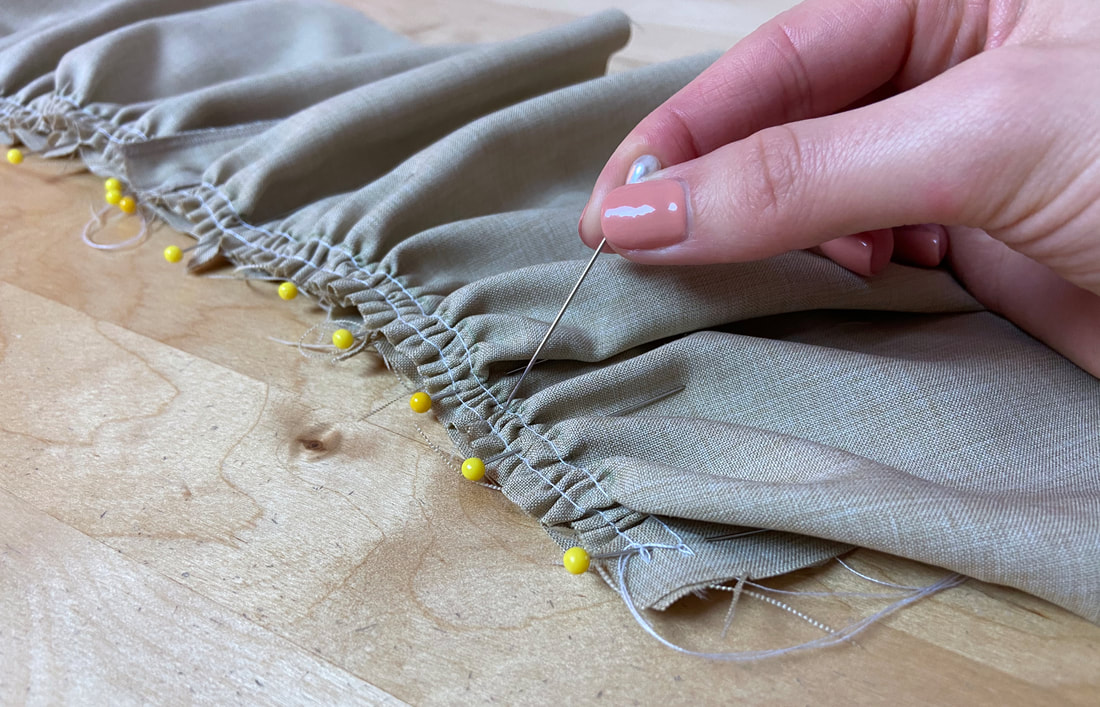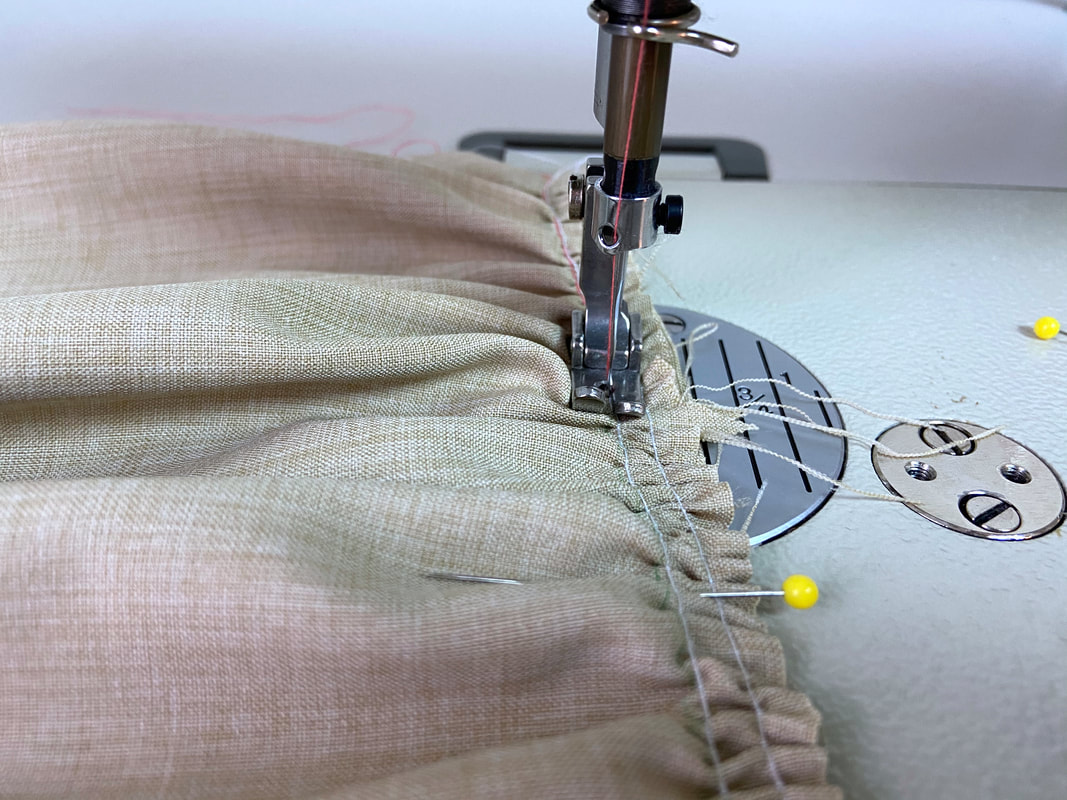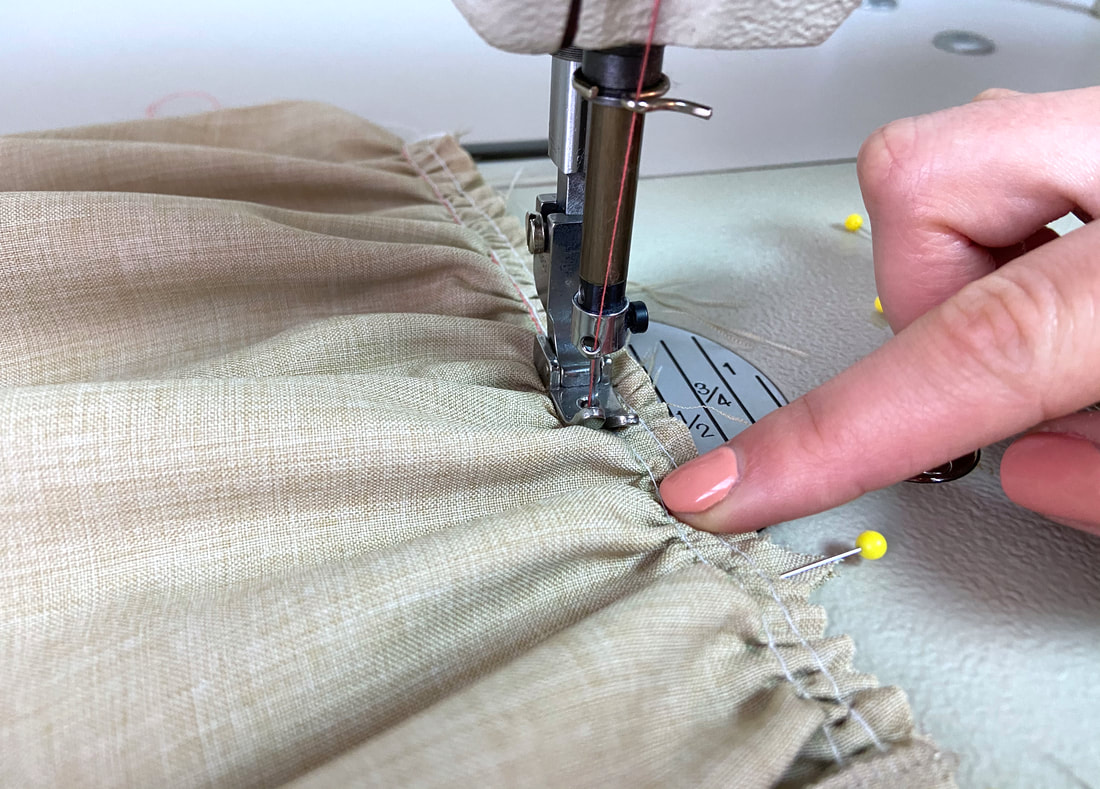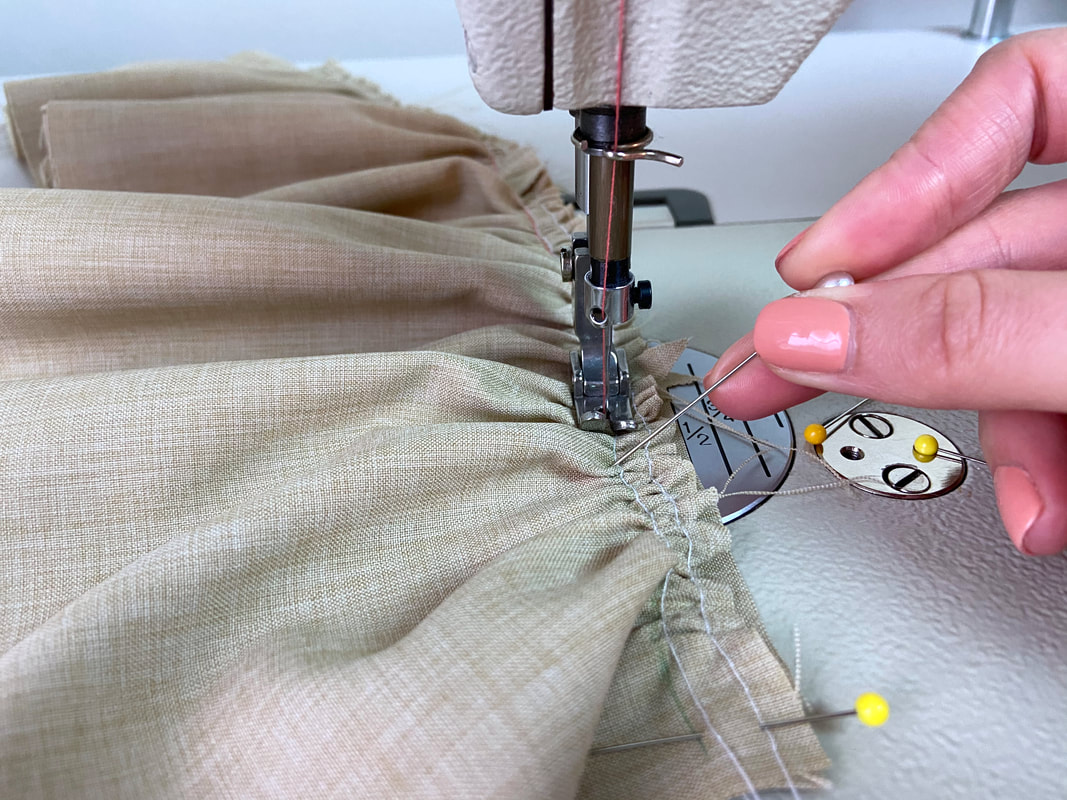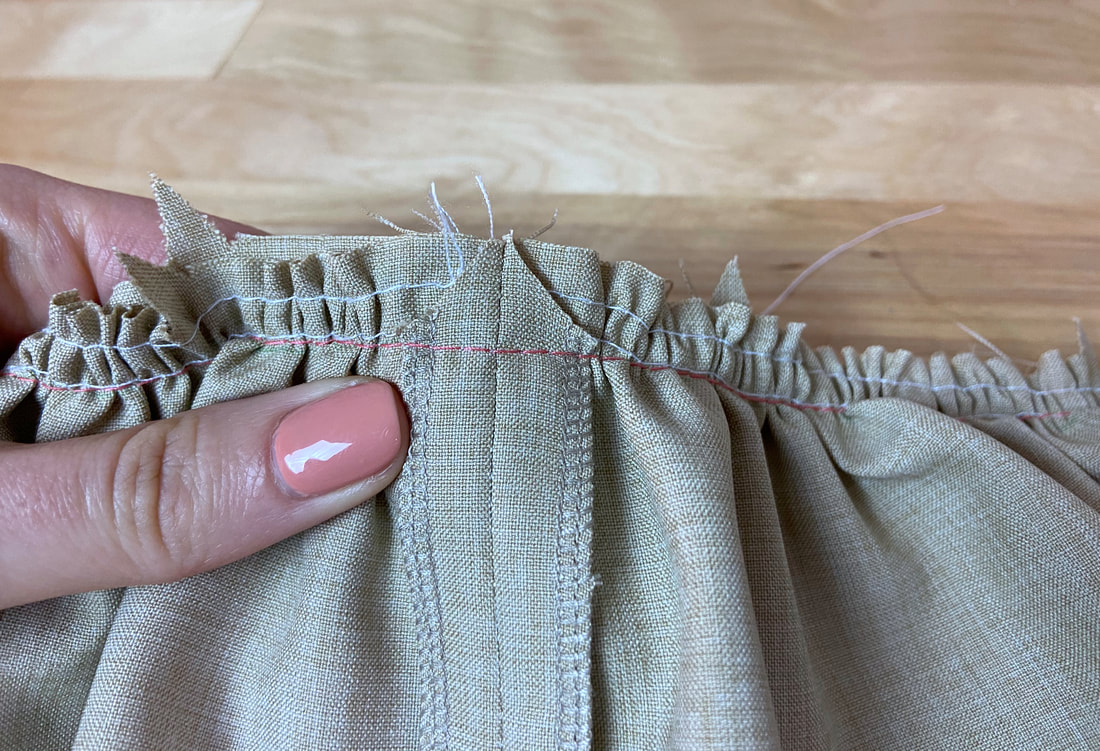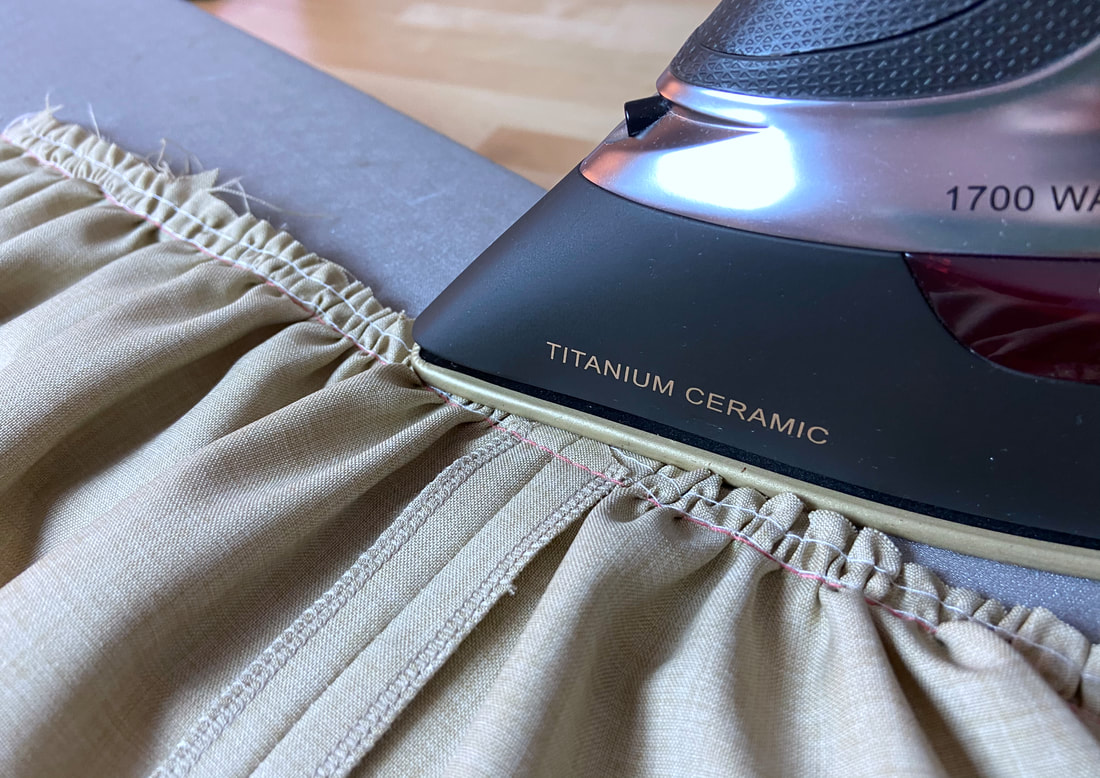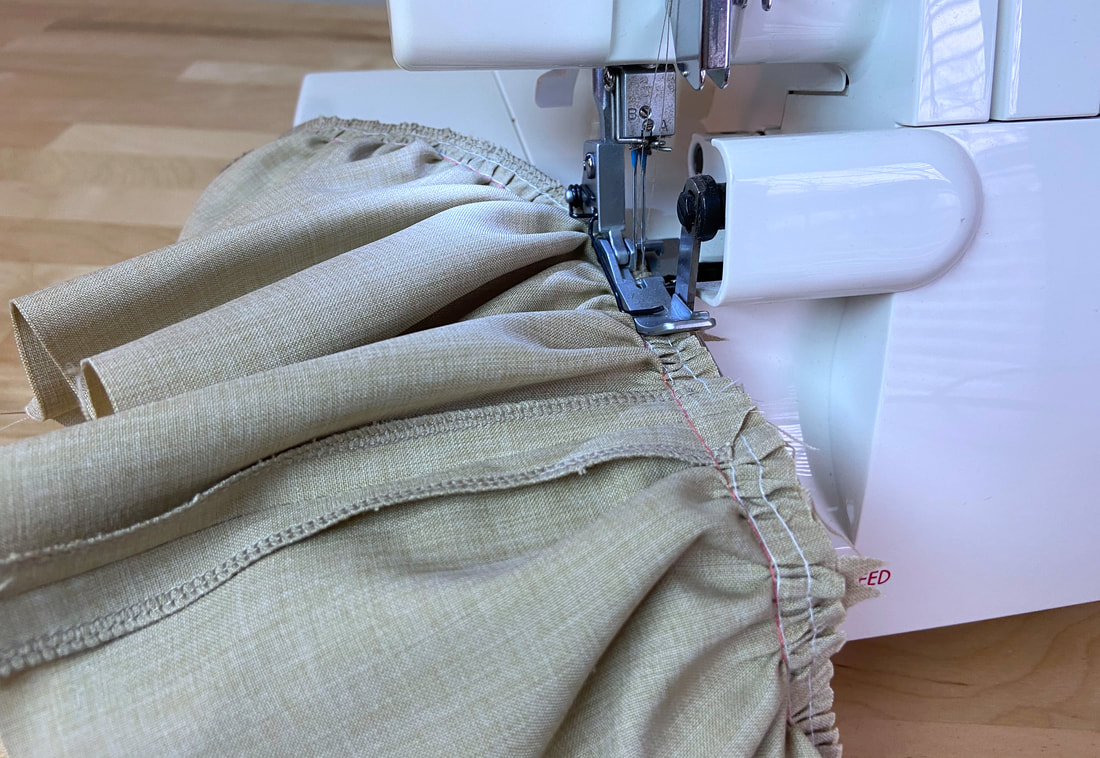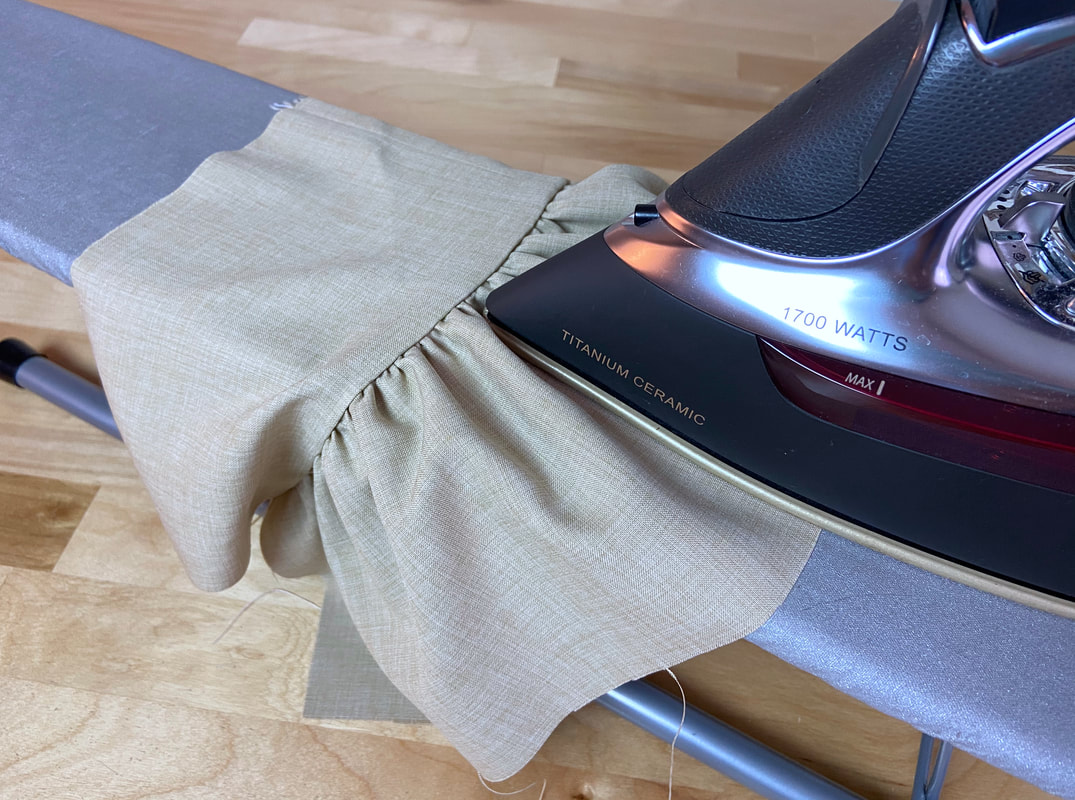What Is Gathering
Gathering is the act of pulling in a fabric edge using one or multiple basting stitches such that it forces the fabric edge into even folds.
Gathering works both as a functional and aesthetic element, adding fullness while also becoming part of the garment’s design. It is usually incorporated with waistline seams, straight ruffles, sleeve cuffs and ruffle collars.
As is true with sewing seams with ease, sewing a gathered seam requires that a longer edge is compressed to fit within a smaller one. Depending on the fullness desired, the edge to be gathered is usually about twice or three times the size of its corresponding seam edge.
Both the fabric and the amount of gathering determines how the gathers will eventually drape and lay. If working with stiff, crisp fabric, the gathering will be puffy and appear fuller. Lightweight, flowy fabrics provide looser, less flouncy gathers.
Due to how a fabric’s crosswise and lengthwise threads behave, gathering always hangs better when added into the crosswise grain. For that reason, gathered seams are conventionally incorporated horizontally on a garment- within waistline seams, for example.
Recognizing A Gathering Edge On A Sewing Pattern
In a store-bought, commercial pattern, gathering will be marked within the edge’s seam allowance using a circle ⭕️ which denotes the gathering's bounds.
Other patterns may denote gathering with a dash line marked midway within the seam allowance.
Regardless of the pattern symbols used, a gathered seam will always include evenly spaced, matching notches along the corresponding edges of the seam. They are imperative in evenly matching the gathered seam layers and providing a guide to correctly distribute the gathers in the process.
Sewing A Gathered Edge To A Straight Edge
1. To start with, make sure all notches and marks have been transferred from the patterns onto each fabric piece. The edges comprising the gathered seam will vary greatly in length, considering the gathering edge is much longer than the plain edge. Both should have an equal number of corresponding notches, which should align perfectly once the longer edge is gathered.
Consider transferring your seamlines to facilitate the sewing process.
Before sewing the actual gathering, make sure that all other seams that intersect this gathered seam are completely stitched and finished. For example, if the gathered seam is located along the waistline, then the side seams and other existing vertical seams (not including those housing a closure) should be stitched, ironed and finished prior the gathered seam application.
2. Switch your machine setting to a basting stitch. A basting stitch, which is the longest stitch length available on your machine, will be easy to pull and gather. However, if the fabric is lightweight, basting stitches may be too wide to provide good control.
The best way to choose the most appropriate stitch length for your gathering application is to test a scrap of your fabric first. Start with a smaller stitch and see how easy the fabric edge is gathered when the stitch is pulled by the bobbin thread. If difficult to gather, increase the stitch length until the fabric is easy to gather but still tight enough to offer stability and control.
3. Apply a stitch within the seam allowance of the longer edge, next to the seamline as shown.
If the edge has crossing seamlines, end the stitch at each seamline and start another one past the seamline again. Leave enough thread at the end of each stitch so that you can comfortably grab and pull it when gathering in the steps to follow.
4. Next, apply a second stitch within the seam allowance at about ¼” up from the first one (or about half the seam allowance).
Start and end this second stitch at the same lengthwise location as the first. Again, leave enough loose thread at the end of each stitch.
These two stitch lines are now your gathering stitches. They will aid in evenly gathering the fabric edge but will not be visible on the face of the garment.
Keep in mind that gathering stitches should never go over crossing seamlines. Since they stop and start at each crossing seam, each portion will be gathered separately.
5. Align and pin all corresponding seamlines first. Pin the fabric edges with face sides touching. The edge receiving the gathering will be much longer than the straight one and should be positioned on top to provide comfort in the gathering process.
6. Starting on one end of the longer edge, pull the two stitch threads simultaneously and begin distributing the gathering through. Continue gathering until the longer edge starts to match the shorter one in length.
7. Match all corresponding notches and insert pins at each notch location to keep the two edges secured.
8. Insert additional pins perpendicularly to keep both edges perfectly aligned.
Tip: To prevent the gathering from unraveling, wrap the loose threads a few times around a pin as shown above.
9. Repeat the gathering and pinning process on the remainder of the seam.
Note: If the seam is extra long, you may need to pull from both sides of the stitching. To keep the stitches from unraveling on the opposite end as you gather, insert a pin horizontally and wrap the loose threads around the pin as shown above.
10. Once the two edges are pinned, use a pin to distribute the gathering as evenly as you can. Make sure the plain seam remains smooth and lays flat under the gathered layer.
11. With the gathering side up, machine stitch on the seamline, right next to the bottom gathering stitch as shown. Use a regular stitch length.
If needed, prior to machine stitching, use a hand basting stitch instead of pins for extra stability.
As the seam feeds through, the presser foot may distort the evenness of the gathers. For that reason, you may need to use your fingers or a pin to redistribute and keep them as even as possible.
12. Once the gathered seam is stitched, trim the crossing seam allowance edges to eliminate bulk.
13. Iron the gathered seam allowance for a smooth final seam.
Clean finish the seam allowance with a technique most appropriate for the garment. Gathered seams are usually enclosed within a facing or clean finished together using overedge stitching (zigzag or serging). In this case, a serging stitch is used.
14. As a final step, iron the seam allowance pointing away from the gathers carefully. Press on the seamline and NOT directly on top of the gathered folds. Gathering should never be ironed flat.
To iron a gathered garment, the body of the gathered portion is ironed directionally from the bottom towards the gathered seam using the iron’s sharp point to press between the folds. The fabric should always be kept flat underneath.

